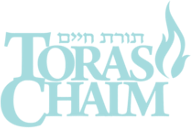Parshas Vayeishev – Erev Chanukah
The Midrash (Bereishis Rabbah 2:4) records cryptically how the Greeks decreed upon the Jews to “inscribe on the horn of the ox that you have no portion in the G-d of Israel.” Different understandings of this decree have been suggested, from those who saw it practically as a sort of “bumper sticker” placed on the horn of the oxen that were used for transport and farming, to those who saw it allegorically as an allusion to the story of the Golden Calf.
My beloved Rebbe, HaRav Yaakov Moshe Kulefsky zt”l, would share an interpretation he heard from HaRav Yechezkel Abramsky zt”l who arrived at a novel understanding of this cryptic reference after a visit to the British Museum. He saw there an exhibition from the Medieval Period that included ox horns that were used as baby bottles. As such he suggested that perhaps this practice was already common in the time of the Greeks, and their decree was intended to force the Jews to have their children ingest this heresy with “their mother’s milk”, so that their disconnection from their G-d and their People would be inherent and instinctive.
It is thus most fitting that to commemorate our victory over the Greeks we observe Chanukah, a holiday that provides a strong measure of the child’s connection to and enchantment with Jewish life. And it is equally notable that our Sages identified a consistent commitment to Chanukah candle lighting with continuity, and the privilege of having children who grow into Torah scholars (TB Shabbos 22b).
In Parshas Vayeishev we read numerous references to identities and relationships expressed through clothing, and easily shed and shifted. From Yosef’s special cloak, given by his father and torn from him by his brothers, to Tamar’s clothing of widowhood changed out of and back into in order to lure Yehuda into their relationship, to Yosef’s cloak again being torn from him and used as a tool of accusation by Potiphar’s wife. And the pattern continues in Parshas Mikeitz, as Yosef emerges from jail to change into civilian clothes, only to be changed again into royal garments. Evidently the identity and relationship afforded by clothing is “easy come and easy go”.
Yet there is another garment whose connection with its bearer is apparently more inherent. In Tehillim (Psalm 104), Hashem is described as “covering Himself with light as a garment”. In fact the Midrash (Bereishis Rabbah 3:4) suggests that the original light was created from a garment that Hashem wrapped Himself in, that absorbed His light and continued to shine with a radiance that filled the world.
This is reminiscent of another Midrashic comment (Bereishis Rabbah 20:12) that describes how in the Sefer Torah of Rabbi Meir, instead of the description of the כתנות עור – the cloaks of skin made by G-d for Adam and Chava after their sin – he had inscribed כתנות אור, cloaks of light. Rabbi Meir seemed to be referencing the original state of Adam, where he too is described as radiating a light that filled the world (see Matnas Kehuna commentary on the Midrash). Once upon a time the human being’s essence was a part of him, radiating outward from the inner recesses of his being, instead of being a superficial cloak of skin, applied externally and easily shed.
This idea is reflected in an intriguing feature of the menorah. There were four main vessels in the Temple, the ark, the golden altar, the table and the menorah. Each of the first three had a crown rim built onto it, representing the three realms of Jewish authority, the Crown of Torah, the Crown of the Priesthood (Kehuna) and the Crown of Royalty. The menorah had no visible crown built into it, yet it is understood that it represented the fourth crown that we are told of in Avos (4:17), the Crown of a Good Name.
The difference between this crown and the others is that the others are not inherent and absolute. The priesthood and royalty are official positions, obvious and visible, but they are “accidents of birth”, not an outgrowth of the essence of the bearer of that crown. The Crown of Torah – represented as it originally was by prophesy, is also a gift that comes in an ecstatic rush and then is gone. Each of these is represented by an external crown, a garment – or accessory – that can come and go.
The Crown of a Good Name is fundamentally different. It comes with no official office and with no visible, external crown. Instead it comes from within the person, as the oil oozes from the olive (טוב שם משמן טוב). It is inherent and connected to the person himself, and has no outer attachment to testify to its existence. It presents instead as the glow of the menorah, the cloak of light that radiates from the worthy person, the original garment of man.
Part of the mandate of the Festival of Lights is to don this cloak of light, to develop a radiance that emanates from our very being. The Greek’s wisdom was referred to in our literature as Chochmos Chitzoniyos, superficial and disconnected wisdom, as opposed to the wisdom of Torah that is internal and connected. Wisdom can be bits of knowledge that we carry around or it can be a deep understanding that defines our sensitivities and our being. The light that we kindle on Chanukah is that light of an internal and connected wisdom that is and will always be with us.
